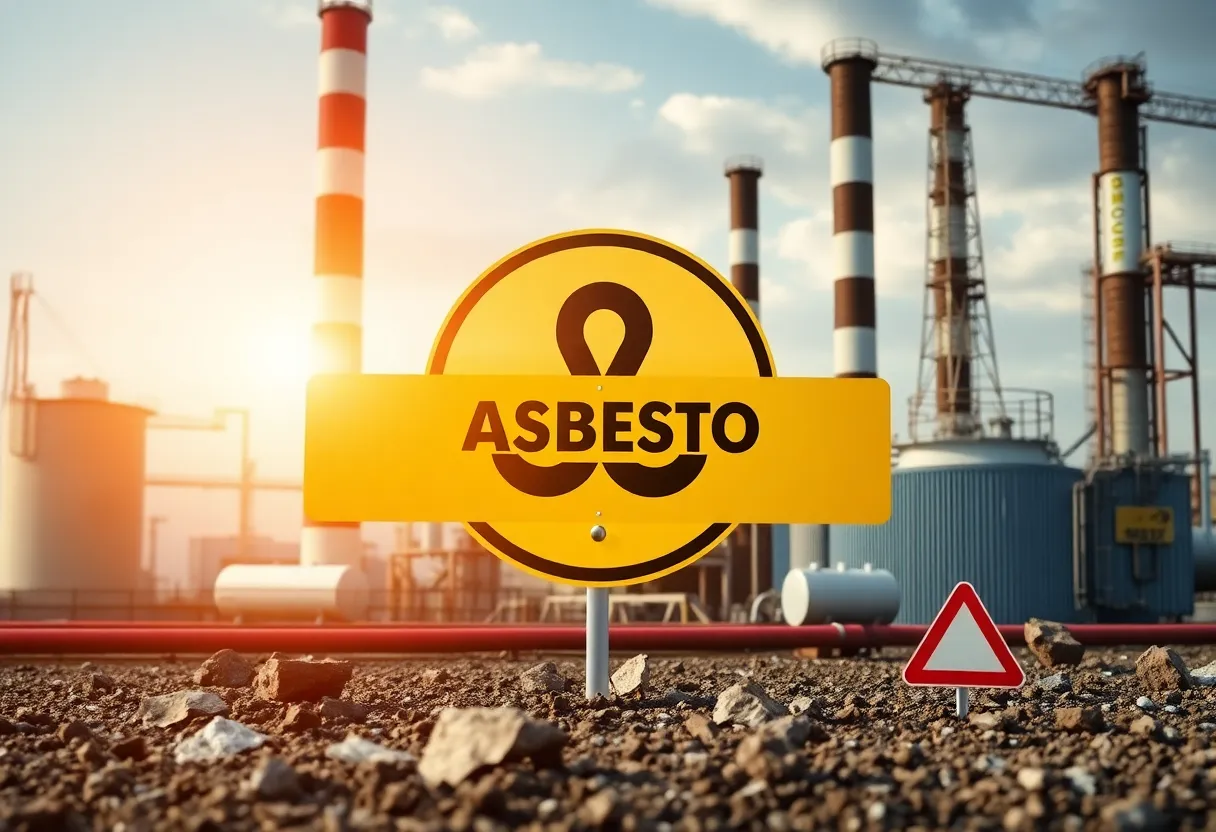News Summary
The EPA has halted its plan to ban chrysotile asbestos, raising concerns among public health advocates. This decision reflects ongoing legal challenges from the chemical industry, which argues against the ban’s implications for economic interests. As the review process unfolds, the future of asbestos regulation in the U.S. remains uncertain, with potential impacts on public health and safety.
New York City
The Environmental Protection Agency (EPA) has announced a significant reversal of its previous plans to ban chrysotile asbestos, the only remaining form of asbestos legally allowed in the United States. The decision overturns the ban implemented earlier this year, which was aimed at phasing out the use of chrysotile asbestos over a 12-year period. This move marks a notable shift in regulatory policy and has considerable implications for public health and industrial safety.
Background of the Asbestos Ban
In March 2024, the Biden administration established a comprehensive risk management rule designed to eliminate chrysotile asbestos usage within the U.S. The ban was part of an effort to address longstanding health concerns associated with asbestos exposure, including severe diseases such as mesothelioma, lung cancer, and ovarian cancer. According to health experts, asbestos exposure is responsible for over 40,000 deaths annually in the United States, highlighting the critical need for stringent regulations.
The EPA’s Reversal and Its Rationale
The recent decision by the EPA to rescind the ban was influenced by multiple factors. Public disapproval from certain industry groups and ongoing legal challenges filed by chemical industry interests have played a central role. Officials cited the need for a more thorough review, stating that the reconsideration process is expected to take approximately 30 months. During this period, the agency will evaluate whether the previous ban was excessively stringent and will explore alternative workplace safety measures to protect workers without outright banning the substance.
Legal and Industry Challenges
Legal actions against the Biden administration’s asbestos ban have already been initiated by industry stakeholders, aiming to block or delay the regulation’s implementation. These lawsuits reflect ongoing tensions between public health advocates and industrial interests seeking to maintain the use of asbestos in certain products. Critics of the re-evaluation argue that extending the use of chrysotile asbestos will result in increased exposure and subsequent health risks, especially in occupational settings.
Uses and Global Context
Chrysotile asbestos has historically been used in a variety of products, including chlorine production, industrial gaskets, brake pads, and other manufacturing materials. Despite its widespread applications, over 50 countries worldwide have banned all forms of asbestos due to its health hazards. The U.S., however, remains one of the few nations where chrysotile asbestos still has legal uses, partly due to industry influence and regulatory delays.
Historical and Public Health Perspective
The ongoing debate over asbestos regulation is rooted in decades of regulatory challenges. The earliest significant attempt to ban asbestos in the U.S. occurred in 1989, but it was overturned in 1991, leading to decades of uncertainty surrounding asbestos safety standards. Historically, asbestos was valued for its fire-resistant properties and was extensively used in construction and manufacturing. However, scientific evidence has consistently linked asbestos exposure to serious health conditions, prompting ongoing legislative and regulatory efforts to protect public health.
Current and Future Policy Implications
The March 2024 risk management rule was intended as a comprehensive response to past safety failures and aimed at minimizing asbestos exposure risks. The EPA’s recent move to reconsider the ban reflects broader tensions between regulatory agencies, industry interests, and health advocates. Many public health groups continue to call for bipartisan legislation that would prohibit all forms of asbestos entirely, seeking to close regulatory loopholes and prevent future health crises.
Conclusion
The decision by the EPA to withdraw the planned chrysotile asbestos ban represents a pivotal moment in U.S. environmental and public health regulation. As industry and legal interests shape the timeline of potential new rules, health advocates remain vigilant, emphasizing the devastating long-term health impacts of asbestos exposure. The ongoing review process underscores the complex balance between economic considerations and the imperative of safeguarding worker and public health from asbestos-related diseases.
Deeper Dive: News & Info About This Topic
HERE Resources
Additional Resources
- AP News: EPA Trump Biden Asbestos Ban
- Wikipedia: Asbestos
- The New York Times: Asbestos Ban Trump
- Google Search: Asbestos Ban
- Newsweek: Trump Rolling Back Asbestos Ban
- Encyclopedia Britannica: Asbestos
- The Hill: Trump Administration Review Asbestos Regulation
- Google News: Trump Asbestos Regulation
- Fast Company: Trump Administration Bring Back Asbestos
- Google Scholar: Asbestos Regulation
Author: STAFF HERE LOS ANGELES WRITER
The LOS ANGELES STAFF WRITER represents the experienced team at HERELosAngeles.com, your go-to source for actionable local news and information in Los Angeles, Los Angeles County, and beyond, specializing in "news you can use" with coverage of product reviews for personal and business needs, local business directories, politics, real estate trends, neighborhood insights, and state news affecting the area—with deep expertise from years of dedicated reporting and strong community input, including local press releases and business updates, while delivering top reporting on high-value events like the Academy Awards, LA Auto Show, and Los Angeles Marathon, extending coverage to key organizations such as the Los Angeles Area Chamber of Commerce and the Los Angeles Tourism & Convention Board, plus leading businesses in entertainment and technology like Warner Bros. and SpaceX, and as part of the broader HERE network including HEREAnaheim.com , HERECostaMesa.com , HEREHuntingtonBeach.com , and HERESantaAna.com , providing comprehensive, credible insights into Southern California's dynamic landscape. HERE Anaheim HERE Beverly Hills HERE Coronado HERE Costa Mesa HERE Hollywood HERE Huntington Beach HERE Long Beach HERE Los Angeles HERE Mission Viejo HERE San Diego HERE Santa Ana





